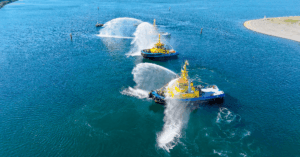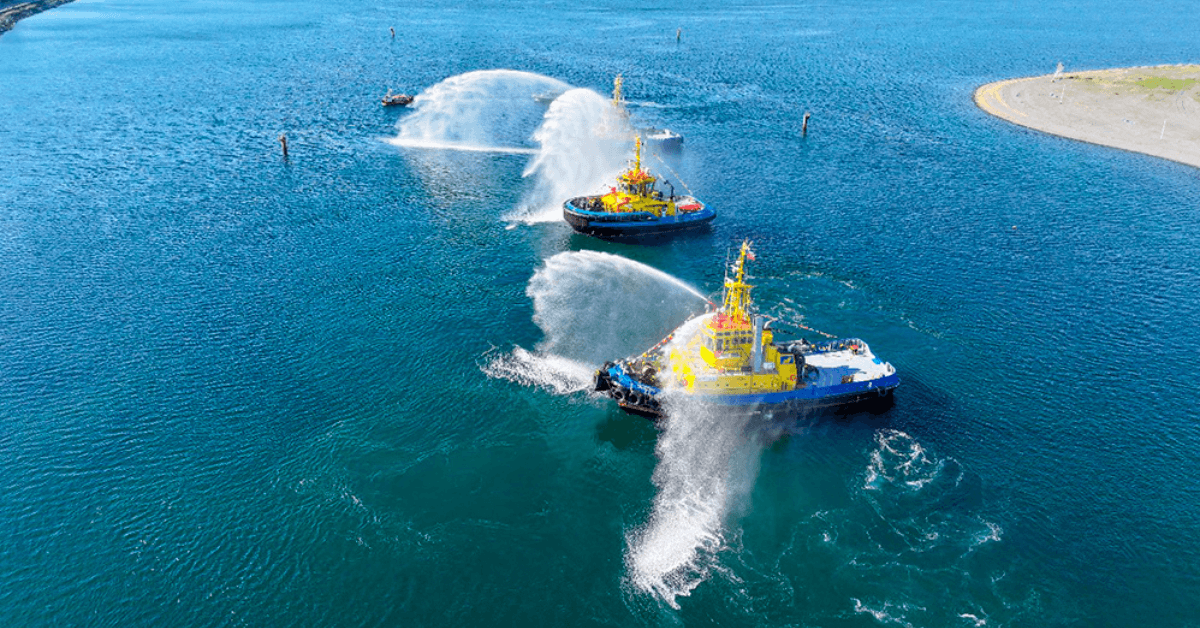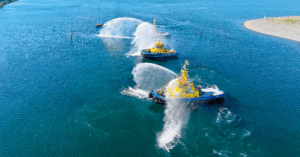
MOL Teams Up With TSUNEISHI To Build Offshore Rocket Launch & Recovery Vessel
July 11, 2025
Houthis Vow To Block All Shipments Linked To Israel Through Declared Zone
July 11, 2025

Chile has introduced Latin America’s first fully electric tugboat, Trapananda. The tug was christened at a ceremony held at the Empormontt Passenger Terminal, attended by local authorities, executives from both companies, and members of the maritime and port community.
The electric tug was developed through a collaboration between SAAM, a leading maritime services company, and Enap, Chile’s national oil company.
The Trapananda will operate at Puerto Chacabuco in the Aysén Region, one of the southernmost terminals in the world. It will assist vessels during berthing and deberthing maneuvers at the port.
One of the unique features of the Trapananda is that it produces zero direct carbon dioxide (CO2) emissions and reduces underwater noise, which helps protect marine life. This makes it a key contribution to decarbonising the port sector in Chile and the region.
It is operated by a local SAAM team trained in Canada to carry out high-precision operations. This tug joins the two electric tugboats that SAAM already has in Canada.
The tugboat is named Trapananda after the historic name of Chilean Patagonia, which was once seen as an unexplored and difficult region filled with dense forests. SAAM chose this name to honor the strength, beauty, and history of southern Chile, where the tug will now work.
The vessel is 25 meters long and 13 meters wide, with a bollard pull capacity of 70 tons, which means it can assist large ships even in tough port conditions.
It is powered by two 2,100-kW electric azimuth thrusters and a 3,616-kWh lithium-ion battery, placed in two separate compartments. The battery is monitored remotely by the manufacturer in Norway and has an estimated life of 10 years.
The design of the vessel was created by Robert Allan Ltd., a well-known naval architecture firm, and built at the Sanmar shipyard in Turkey. The design is made to lower hull resistance and increase energy efficiency.
The vessel also passed strict seaworthiness tests before entering service.
Reference: saam
Source: Maritime Shipping News


